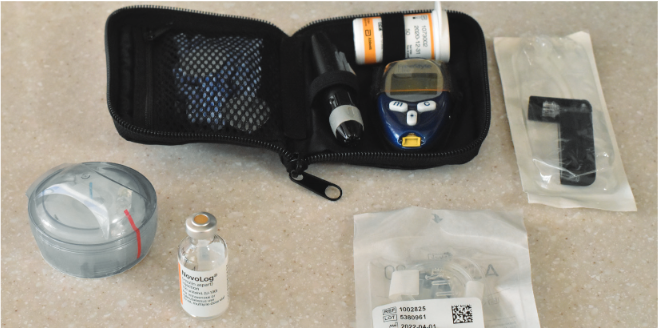By Remington Vaughan, Staff Reporter
On March 1, Eli Lilly and Company announced it would be reducing the prices of its prescribed insulins by 70% and “capping patient out-of-pocket costs at $35 or less a month,” according to a press release from the company.
On March 14, less than two weeks later, Novo Nordisk released a statement, announcing that “it is lowering the U.S. list prices of several insulin products by up to 75% for people living with Type 1 and Type 2 diabetes.”
Two days later, Sanofi announced that it will cut the list price of Lantus, its most widely prescribed insulin in the U.S., by 78%. The company also will establish a $35 cap on out-of-pocket costs for Lantus for all patients with commercial insurance.
For both Novo Nordisk and Sanofi, these new prices will go into effect on Jan. 1, 2024. These three companies — Eli Lilly, Novo Nordisk and Sanofi — are the largest producers of insulin, a hormone used to manage blood sugar levels and help one’s body turn food into energy. For all non-diabetics, this hormone is produced naturally. Diabetes consists of a group of chronic health conditions, the most well-known being Type 1 and Type 2 diabetes.
For people with diabetes, their bodies either don’t produce enough insulin or their cells stop responding to insulin. When this happens, too much blood sugar stays in their bloodstream. Over time, that can cause serious health problems, such as heart disease, vision loss and kidney disease, according to the CDC. Those living with diabetes have to take insulin, but the prices created barriers for many diabetics to obtain the medication itself.
“14% of people who use insulin in the United States face what are described as a ‘catastrophic’ levels of spending on insulin, meaning they spent at least 40% of their available income after paying for food and housing on insulin,” according to Yale University researchers Baylee Bakkila, Sanjay Basu and Kasia Lipska.
However, insulin prices are a smaller issue compared to the price of supplies diabetics use to manage blood sugar levels and administer insulin.
“These changes are only for some insulins. People with diabetes need more than just insulin to survive, and those costs need to be lowered, as well. Additionally, these changes don’t impact any new insulins coming onto the market,” said a spokesperson from T1International, a non-profit organization that advocates for people with Type 1 diabetes.
Insulin accounted for only 18% of all out-of-pocket spending for diabetes related care, which is less out-of-pocket spending than what is spent on diabetes-related supplies, including insulin pumps and continuous glucose monitors, according to research done by JAMA Internal Medicine.
These insulin price cuts follow a federal bill passed in January that capped the monthly out-of-pocket cost of insulin at $35. However, the cap would only go into effect for those with Medicare or private insurance.
“These (companies’) changes mean that people without insurance, who are often the most impacted by high list prices, will have more options,” said a spokesperson from T1International. “We need these changes for all insulins and to see this kind of price lowering globally — but it’s a start. We also need federal legislation to ensure that the companies can’t decide to raise their prices again at whim.”
Remington Vaughan can be reached at [email protected].



























































































